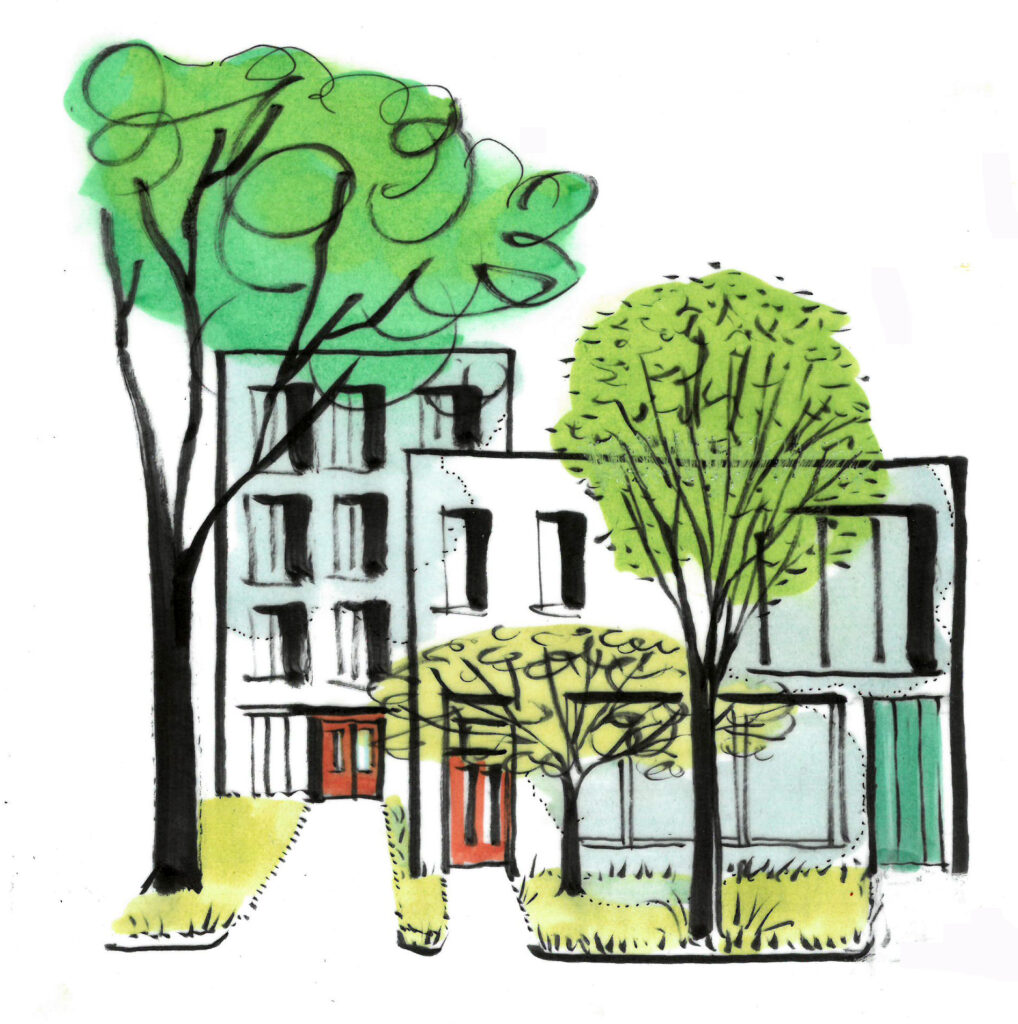14. The Green Toolkit
14.1. Introduction
Just as technology is developing to deliver alternative forms of energy, architecture is changing to respond to new ecological challenges. The design of homes is evolving to reflect a desire to live in more natural surroundings and to live more lightly on the planet, conserving precious resources.
14.2. Vertical greening
Issues of overlooking on small sites mean some building façades may be nearly or completely windowless. Consider clothing these otherwise stark walls with ground-planted, non-invasive vines. This will:
- Beautify a potentially unfriendly wall
- Provide seasonal colour
- Make homes cooler in summer and warmer in winter; and
- Support biodiversity


14.3. Living roofs
Flat roofs can be green, brown or blue (flooded). All of these can be sustainable and enhance biodiversity.
Roofs can be inhabited, providing additional outdoor space on small plots, or for upper-level homes. They are a great place to grow food and learn about plants. Consider a small greenhouse to germinate seeds, composting bin and tap with water butt. Even a small roof will fill a water butt surprisingly quickly.
14.4. Rainwater collection
Consider using inward roof slopes to collect rainwater on site for reuse for gardens or washing pets. You will be following a tradition dating back to the Romans.
Rainwater harvesting points need to be designed carefully for ease of use of collected water and safety of use for residents.


14.5. Use trees to shade and to beautify
Trees and buildings can coexist happily, even in close proximity, and a good tree will always beautify and add value to a plot. They add to biodiversity and can provide useful summer shading.
Existing mature trees should be seen as neighbourhood assets and have a role to play in tackling climate change. Mature trees may also help applicants of major applications (10 units or more) achieve the required London Plan Urban Greening Factor.
Therefore, design around trees rather than felling them. If there are no trees, plant some, and position them to enhance not just your own plot, but the whole neighbourhood.
14.6. Solar panels
South facing roof slopes are great places for PVs (photovoltaic panels). The solar energy they capture will future-proof and heat your home, cut your bills and help save the planet.
Photovoltaic panels work particularly well when placed with living roofs as the combination tends to improve the efficiency of the panels.
